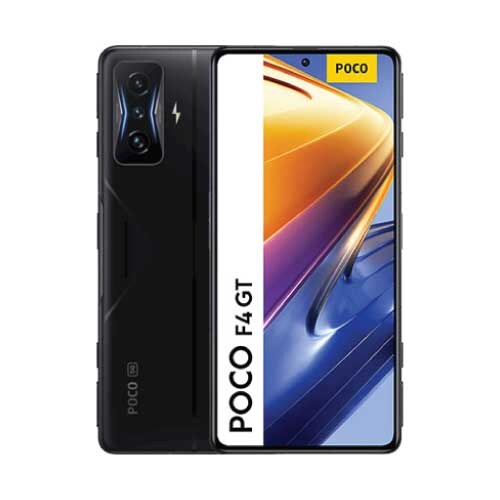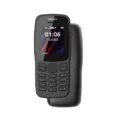Xiaomi Poco F4 GT





Full Specifications
General
| Name | - Xiaomi Poco F4 GT |
| Model | - 21121210G |
| Status | - Available |
| Announced | - 26 April 2022 |
| Released | - 28 April 2022 |
| Ex. Price |
- $ 379.00 - € 489.00 - £ 670.00 |
Network
| Sim Type | - Dual SIM (Nano-SIM, dual stand-by) |
| Technology |
- GSM - HSPA - LTE - 5G |
| Speed |
- HSPA - LTE-A - 5G |
Body
| Dimensions | - 162.5 x 76.7 x 8.5 mm (6.40 x 3.02 x 0.33 in) |
| Weight | - 210 g (7.41 oz) |
| Build |
- Glass front (Gorilla Glass Victus) - Glass back - Aluminum frame - Physical magnetic pop-up gaming triggers |
| Color |
- Stealth Black - Knight Silver - Cyber Yellow |
Display
| Display Type | - AMOLED, |
| Display Size | - 6.67 inches, 107.4 cm2 (~86.2% screen-to-body ratio) |
| Resolution | - 1080 x 2400 pixels, 20:9 ratio |
| Pixel Density | - 395 PPI |
| Brightness | - Brightness- 800 nits (HBM) |
| Display Features |
- 1B colors, 120Hz, HDR10+ |
| Touch Screen | -Yes |
| Refresh Rate | - 120Hz |
| Protection | - Corning Gorilla Glass Victus |
Platform
| OS | - Android 12 |
| Custom UI | - MIUI 13 |
| Chipset | - Qualcomm SM8450 Snapdragon 8 Gen 1 (4 nm) |
| CPU | - Octa-core |
| Architecture |
- 1x3.00 GHz Cortex-X2 - 3x2.50 GHz Cortex-A710 - 4x1.80 GHz Cortex-A510) |
| GPU | - Adreno 730 |
Memory
| Storage Type | - UFS 3.1 |
| SD Card Slot | - No |
Primary Camera
| Setup | - Triple |
| Camera |
- 64 MP, f/1.9, 26mm (wide), PDAF - 8 MP, f/2.2, 120˚ (ultrawide) - 2 MP, f/2.4, (macro) |
| Features |
- Dual-LED flash - HDR - Panorama |
| Video Recording |
- 4K@30/60fps - 1080p@30/60/120fps - 720p@960fps - HDR |
Selfie Camera
| Setup | - Single |
| Camera | - 20 MP, f/2.4, (wide) |
| Features | - HDR |
| Video Recording |
- 1080p@30/60fps - 720p@120fps - HDR |
Multimedia
| Speaker |
-Yes - 4 speakers |
| Audio |
- Yes - 24-bit/192kHz audio - Tuned by JBL |
| Video | - Yes |
| Recording | - Yes |
| 3.5 mm Jack | |
| FM radio | - No |
| Extra Mic | - Yes |
Security
| Face Unlock |
Connectivity
| WLAN |
- Wi-Fi 802.11 a/b/g/n/ac/6, - Dual-band, Wi-Fi Direct, - Hotspot |
| Bluetooth | - 5.2, A2DP, LE |
| GPS |
- GPS (L1+L5), GLONASS (L1), BDS (B1I+B1c+B2a) - GALILEO (E1+E5a), QZSS (L1+L5), NavIC (L5) |
| NFC | Yes |
| USB |
- USB Type-C 2.0, - USB On-The-Go |
| Sensors |
- Fingerprint (side-mounted), - Accelerometer, Gyro, Compass, Color spectrum - Virtual proximity sensing |
| Infrared port |
Battery
| Battery Type | - Li-Poly (Lithium Polymer) |
| Capacity | - 4700 mAh, non-removable |
| Charging | - 120W wired, PD3.0, QC3, 100% in 17 min (advertised) |
Disclaimer
We do not guarantee that the information of this page is 100% accurate and up to date.
INTRODUCTION
The Poco F4 GT is seldom a shock feature-wise. The magnetic pop-up buttons do use gaming-specific ability and can also work as faster methods normally used. They’d maybe produce outstanding toys, also The Snapdragon 8 Gen 1 is great for video gaming, however, its performance doesn’t discriminate – most likely the peak Android chip right now, and it fits the marketing story well. Xiaomi’s give 120W adapter remains in the box.
The F4 GT’s video camera system is not rather roughly the very same high. It does cover the principles with a 64MP primary system and, likewise, a simple 8MP ultrawide, however, it’s barely a cameraphone item.
Poco F4 GT specifications at a glimpse:
Body: 162.5 x76.7 x8.5 mm, 210g; Glass front (Gorilla Glass Victus), glass back, light-weight aluminum frame; Physical magnetic pop-up video gaming sets off.
Display: 6.67″ OLED screen, 1B colors production, 120Hz revitalize rate, HDR10+ supported, 1080x2400px resolution, 20:9 element ratio, 395ppi density.
Chip: Qualcomm SM8450 Snapdragon 8 Gen 1 (4 nm); Octa-core (1×3.00 GHz Cortex-X2 & 3×2.50 GHz Cortex-A710 & 4×1.80 GHz Cortex-A510); Adreno 730.
Memory: UFS 3.1 8GB RAM, 12GB RAM, 128GB & 256GB ROM
OS/Software: Android 12, MIUI 13.
Back Video Camera: Wide (main): 64 MP, f/1.9, 26mm, 1/1.7″, 0.8 µm, PDAF; Ultra wide angle: 8 MP, f/2.2, 120 ˚; Macro: 2 MP, f/2.4.
Front Cam: 20 MP.
Video capture: Back electronic video camera: 4K@30/60fps, 1080p@30/60/120fps, 720p@960fps, HDR;
Front camera: 1080p@30/60fps, 720p@120fps, HDR.
Battery: 4700mAh; Quick billing 120W, Power Delivery 3.0, Quick Charge 3+. Misc: Fingerprint reader (side-mounted); NFC; Infrared port; Online closeness seeing.
DESIGN & BUILD QUALITY
Poco might have pulled out of the Pc video gaming name for the F4 GT, as they completed with the F3 GT. The Front Display is secured by coring Gorilla glass victus. There might extremely well be a benefit to that sentiment, particularly from the F4 GT’s perspective – they can be prettier than useful.
The locks have red dots to provide a visual sensation when the user switches are deployed, though it’s more of a design say than a useful touch – after all, the switches disappear right into the frame when they’re disengaged. With the locks for the shoulder buttons and the buttons themselves, the perfect side of the phone is currently quite busy with controls. Nevertheless, there’s one more one here as well – the power button/fingerprint reader combination. It’s similarly quick and also hassle-free to open with either figure also. There’s a choice in setups to work around that issue by needing a click the button for the fingerprint acknowledgment to involve, and we would certainly opt for that.
The Poco F4 GT has an outstanding vibration motor. It’s a large X-axis device and likewise provides perfectly nuanced haptics. Returning to buttons, there’s the amount rocker on the phone’s left, just above the middle. It’s notched just slightly between the typical styling element throughout the phone’s design. There’s a mic pinhole beside the volume rocker – a most unusual positioning, though one that makes good sense in the context of the Poco. The thinking is that you’ll be waiting with both hands in landscape and likewise perhaps obstructing the different other 2 mics, while this location will stay unhampered.
SIM & IP RATING
Also on this side of the mobile phone is the SIM slot, high up near the top. A back-to-back double nano-SIM tray fits within. However, there’s no alternative for storage space growth. There’s a red gasket lining the tray, so some steps have been needed to guarantee dirt, along with water, stay out of the Poco, but there’s no official IP ranking. There are speaker openings, both top and bottom, and the double slots also stick to the same design style. Mics on each end of the phone, along with the leading likewise homes an IR gun, while the bottom homes the USB-C port. There’s no earphone jack, though the packed dongle is the next finest thing.
The primarily frozen glass panel is divided in two by a glossy strip in the center and two arrows intending internally also have a slightly different finish. We’re getting a ‘moving doors in a spaceship’ atmosphere. Further in, in addition to the arrows, there are slim RGB LED strips that can brighten in different colors to reveal notifications, calls, or battery/charging status. Fantastic. Outside the camera island, there’s the dual LED flash, it’s intermediary formed like lightning – an additional excellent touch.
POCO F4 GT SCREEN
The Poco F4 GT has a Good display for providing a far more beautiful versatile refresh cost and QHD resolution. The 6.67-inch OLED has a 1080x2400px resolution in a 20:9 aspect (395ppi pixel density), renews at approximately 120Hz with a 480Hz touch sampling rate, and HDR10+. What else can you request at this expense point? It does quite well regarding brightness too. It might push even more nits in HDR applications, the phone does sustain HDR, and YouTube, Netflix, and Amazon Prime Video all send out HDR streams at 1080p when it comes to Netflix and Prime Video.
Color entertainment is run in the conventional (excessively) feature-rich way. Xiaomi likes to utilize higher-end styles. You acquire 3 right away used pre-programmed settings (Vibrant, Saturated, Original color), with a shade wheel, noted below, for tweaking the temperature level on top of 3 production facilities presets (Default, Cozy, Trendy). Then there’s an Advanced settings submenu where you have two more presets (P3, along with sRGB), RGB sliders, and sliders for tone, saturation, value, contrast, and gamma.
The Customized setting, where you can select 60Hz or 120Hz. Correctly, Default and Custom-made 120Hz do the extremely same point along with dealing you 120Hz when you’re engaging with the phone, which drops to 60Hz after you stop touching it for a variety of seconds. Exceptions consist of video clip playback-related applications (whether streaming or regional) which get locked at 60Hz, as do Google Maps and the electronic cam application. Games that support a high frame price are handled to 120Hz, as they must be.
MIUI USER INTERFACE
The F4 GT is the very first Poco we acquired that runs MIUI 13 on top of Android 12 – both newest ones did have MIUI 13 yet were still on the previous version. As usual in the MIUI camp, it’s the tailored overlay’s variation that issues higher than the primary OS, but there are still a couple of new things. Super Android 12 attributes like the redesigned widgets user interface and individual privacy control panel stay absent.
With the pop-up triggers, You likewise get the choice of faster ways to the triggers for things like introducing the cam or flashlight. Each trigger can be developed independently, and prolonged and double press actions can be identified. The other attribute that sets the F4 GT in addition to your ordinary phone is the RGB LED lighting inside the camera on the back. The strips can notify you of incoming telephone calls and pulse for notices.
However, that’s not the case – it’s one shade for all information and another for a phone conversation. The rest of the interface is a typical MIUI with minor Poco twists. There’s Always-on display screen efficiency, and it’s the full variation. Some Pocos in the past permitted the first option. Naturally, there is a good deal of AOD you can choose from, in addition to numerous of those that can also be customized. Although the F4 GT has LEDs on the back, it still supports the Alert result. It illuminates the edges of the screen when brand-new notices are available. Yet, there’s little in the modification technique aside from a couple of different shades and a ‘Starlight’ choice. You open the screen through the side-mounted fingerprint scanner.
MIUI
The viewers are extremely simple to utilize and blazing-fast, and the accuracy are outstanding. A 2D Face Unlock is used, too; however it is much less safe than the fingerprint choice. The application drawer itself corresponds, though – by default, it immediately organizes your apps right into classifications, which you can modify or disable completely. The choice for a regular-looking job switcher with side-scrollable cards is not offered on the Poco launcher. Designs have constantly been a huge part of MIUI, and they are offered on MIUI 13, too – on the Poco construct.
You can download new ones from the Themes store, and they can change wallpapers, ringtones, system icons, and even the always-on display screen style. Super Wallpapers are also offered. MIUI includes its special multimedia applications – Gallery, Music, and Mi Video. An MIUI Documents supervisor is likewise on board. And likewise, a Mi Remote application that uses the incorporated IR gun.
MIUI similarly supplies a Defense app. It can scan your phone for malware, handle or restrict your information use, set up battery actions, and optimize some RAM. It can in addition, take care of the permissions of your set-up apps, define the battery practices of chosen applications, along with apply limitations just to particular applications. As well as speaking of memory, MIUI 13 uses a Memory Extension option that’s active by default (you can disable it if you like).
SOFTWARE & PERFORMANCE
The F4 GT is geared up with the Snapdragon 8 Gen 1 – Qualcomm’s present most powerful chipset, which is among the phone’s vital marketing points and the columns of its ‘Peak of power’ tagline. 2 memory and likewise storage configurations are provided – the base version is 8GB/128GB, That’s LPDDR5 RAM as well as UFS 3.1 storage area, so whatever is exceptional. The F4 GT still dropped to 64% of its peak efficiency in the CPU strangling test, with a short-term dip to under 60%. That’s an essentially typical efficiency with front-runner chipsets and should not usually be a problem.
POCO F4 GT CAMERA
3 cameras on the back, 20MP selfies. The Poco F4 GT is no webcam professional; however still has a decently-specced arrangement. The triad of electronic cameras is headlined by a 64MP primary device, joined by an 8MP ultrawide, and likewise, there’s a standard 2MP macro webcam.
MAIN CAMERA
The primary Camera uses the IMX686 noticing unit from Sony – a 1/1.7″ imager with 0.8 µm pixels and a Quad Bayer color filter range that outputs 16MP images using 4-to-1 binning. Combined with it is a lens with an f/1.9 aperture.
The ultrawide camera is based upon the OmniVision OV08856 sensor – a modest 8MP gadget with 1.12 µm pixels and a 1/4″ optical style. The field of view needs to cover around 120 degrees according to press products, in addition to an emphasis, which is repaired, so it can’t be utilized for close-ups (well, not sharp ones, at the minimum).
There’s the 2MP macro shooter, though we’re not anticipating a good deal.
POCO F4 GT SELFIE CAMERA
On the front, you’re obtaining a 20MP Sony IMX596 sensor, which the web doesn’t reveal much about. Our wild guess is that it’s a 1/2.8″ Quad Bayer style. The lens aperture is f/2.2, and the focus on this is also repaired. At the near end, you have the webcam zoom switch that runs in several numerous styles.
The preliminary one is merely discussing the 3 dots that represent the ultra-wide, key, and likewise 2x electronic options. Or you can touch on the active zoom and select among several pre-programmed levels or utilize the slider for intermediate magnifications. That preset/slider combination likewise appears if you press and hold on to among the dots for the non-active zoom level.
The 20MP selfies out of the Poco F4 GT are a mix of excessive resolution and also not rather enough information for that resolution, however, ultimately, they’re quite strong. Circling back to detail, these would have been exceptional 10MP shots, while at 20MP, there’s some gentleness and significant developing to be observed at the pore degree. This is not how selfies are best observed, undoubtedly.
VIDEO
The Poco F4 GT documents video clip as much as 4K 60 with its major camera, while the ultrawide is covered at 1080p at 30fps. You get always-on support in all settings and the alternative to using the h. 265 codec for inscribing. The 4K video from the primary cam looks a notch except excellent. That assessment may differ depending on whether you enjoy its excessively meaningful discussion of color. Likewise, comparison – we’d declare that saturation and contrast are a bit much, but if you like them this way, there’s hardly anything incorrect with these clips. Info abounds if overprocessed, and there’s no noise to point out. The small reduction in information in the 60fps catch compared to 30fps is of little value.
SOUND
The F4 GT has a stereo audio speaker system with 4 genuine audio speakers – a ‘woofer’ and a tweeter at each end of the phone. The audio speakers fire out of the top and bottom of the phone and are placed in such a way as to prevent your hands from covering them when you’re waiting in the landscape with the shoulder buttons ahead.
POCO F4 GT BATTERY
A 4,700 mAh battery powers the Poco F4 GT split right into 2 cells; each has its billing wiring. The Poco is doing an ideal task. Charging rate. It might not be the longest lasting, yet the Poco F4 GT sure is amongst the fastest to charge. Loaded with it is Xiaomi’s fastest battery charger, the 120W device we have seen a few times currently – with appropriate flagships and higher-end Redis. Journalism products guarantee that a complete charge will take 17 mins – their screening treatment is with the phone off and beginning at 2%.
For one, you require to enable the Boost mode in the battery settings (it’s off out of the package) to get the fastest charging – without it, you would be having a look at 20-ish mins. Another footnote is that there’s a difference between the 100% number in the battery indicator and the state in which the phone reports a ‘complete’ expense, in addition to 5 minutes with Boost enabled and 8 minutes with the attribute switched off. Typically, the ambient temperature level will also impact the charging speed.
OUR OPINION
Pc video gaming chops in a grown-up-friendly outfit feel like a strange crossover. However, that’s the ambiance from the Poco F4 GT. The current Snapdragon register with a set of snappy-clicky shoulder activates ensures that the mobile can stand its ground versus the ROGs of the world. The user side is likewise well cared for by an outstanding screen and big-sounding speakers. Battery life might be middle of the roadway, in addition to the electronic video camera system is rarely impressive. Yet, neither is strictly unfavorable regarding being a dealbreaker, and it’s not like rivals develop an especially high bar in either regard.





















